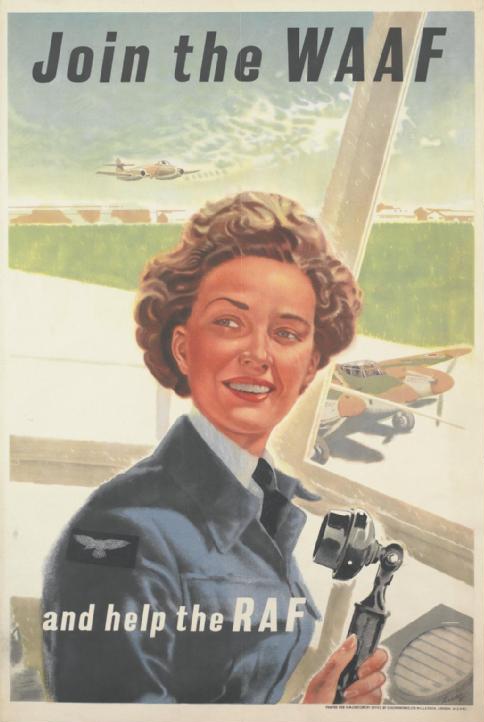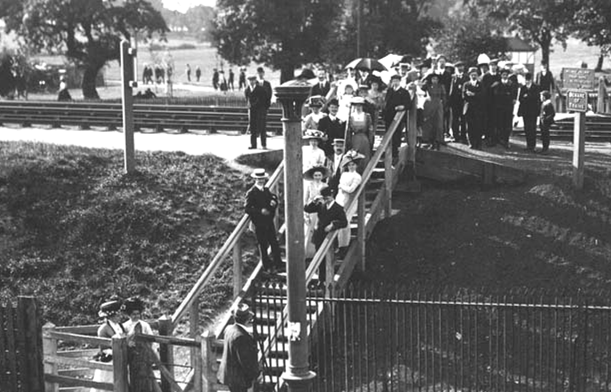|
Eric Simms (ornithologist)
Eric Arthur Simms, DFC (24 August 1921 – 1 March 2009) was an English ornithologist, naturalist, writer, sound recordist, broadcaster and conservationist, as well as a decorated wartime Bomber Command pilot/ bomb-aimer. He was born on 24 August 1921, the youngest of three brothers, in London, where his father was head gardener at the private gardens in Ladbroke Square. He won a scholarship to Latymer Upper School and in 1939 began to read history at Merton College, Oxford, where he also took up bird ringing and joined the University Air Squadron, and, without completing his studies, was sent for aircrew training in Canada and the United States in 1941. He was called up, joining the Royal Air Force in 1941 and by 1943 was a Leading Aircraftman, and was then commissioned as a pilot officer on probation in the Royal Air Force Volunteer Reserve on 19 March 1943, serving as a bomb aimer and second pilot in Lancaster bombers, in which he flew 27 raids over Germany. On 14 Novem ... [...More Info...] [...Related Items...] OR: [Wikipedia] [Google] [Baidu] |
Distinguished Flying Cross (United Kingdom)
The Distinguished Flying Cross (DFC) is the third-level military decoration awarded to officers, and since 1993 to other ranks, of the United Kingdom's Royal Air Force and other services, and formerly to officers of other Commonwealth countries, for "an act or acts of valour, courage or devotion to duty whilst flying in active operations against the enemy". History The award was established on 3 June 1918, shortly after the formation of the Royal Air Force (RAF), with the Royal Warrant published on 5 December 1919. It was originally awarded to RAF commissioned and warrant officers, including officers in Commonwealth and allied forces. In March 1941 eligibility was extended to Naval Officers of the Fleet Air Arm, and in November 1942 to Army officers, including Royal Artillery officers serving on attachment to the RAF as pilots-cum-artillery observers. Posthumous awards were permitted from 1979. Since the 1993 review of the honours system as part of the drive to remove disti ... [...More Info...] [...Related Items...] OR: [Wikipedia] [Google] [Baidu] |
Pilot Officer
Pilot officer (Plt Off officially in the RAF; in the RAAF and RNZAF; formerly P/O in all services, and still often used in the RAF) is the lowest commissioned rank in the Royal Air Force and the air forces of many other Commonwealth countries. It ranks immediately below flying officer. It has a NATO ranking code of OF-1 and is equivalent to a second lieutenant in the British Army or the Royal Marines. The Royal Navy has no exact equivalent rank, and a pilot officer is senior to a Royal Navy midshipman and junior to a Royal Navy sub-lieutenant. In the Australian Armed Forces, the rank of pilot officer is equivalent to acting sub lieutenant in the Royal Australian Navy. The equivalent rank in the Women's Auxiliary Air Force (WAAF) was "assistant section officer". Origins In the Royal Flying Corps, officers were designated pilot officers at the end of pilot training. As they retained their commissions in their customary ranks (usually second lieutenant or lieutenant), and ... [...More Info...] [...Related Items...] OR: [Wikipedia] [Google] [Baidu] |
South Witham
South Witham is a village and civil parish in the South Kesteven district of Lincolnshire, England. The population of the civil parish at the 2011 census was 1,533. It is situated south of Grantham, 10 miles east of Melton Mowbray and 10 miles (16 km) north of Oakham. The village is close to the Leicestershire and Rutland borders. History The village takes its name from the River Witham which rises nearby. But the origin of the word ''Witham'' is still unknown. The village has until recently also been spelt as "South Wytham". In 1966, the Royal Air Force built a large housing estate on the opposite side of the River Witham. The houses were intended for servicemen at RAF Cottesmore, but were taken instead by personnel at RAF North Luffenham. The village trebled in size virtually overnight, and the primary school was similarly increased in size. A NAAFI was provided for the forces' families. On 2 August 1973, Canberra B2 WJ674 of 231 OCU crashed in the field east of The ... [...More Info...] [...Related Items...] OR: [Wikipedia] [Google] [Baidu] |
The Daily Telegraph
''The Daily Telegraph'', known online and elsewhere as ''The Telegraph'', is a national British daily broadsheet newspaper published in London by Telegraph Media Group and distributed across the United Kingdom and internationally. It was founded by Arthur B. Sleigh in 1855 as ''The Daily Telegraph & Courier''. Considered a newspaper of record over ''The Times'' in the UK in the years up to 1997, ''The Telegraph'' generally has a reputation for high-quality journalism, and has been described as being "one of the world's great titles". The paper's motto, "Was, is, and will be", appears in the editorial pages and has featured in every edition of the newspaper since 19 April 1858. The paper had a circulation of 363,183 in December 2018, descending further until it withdrew from newspaper circulation audits in 2019, having declined almost 80%, from 1.4 million in 1980.United Newspapers PLC and Fleet Holdings PLC', Monopolies and Mergers Commission (1985), pp. 5–16. Its si ... [...More Info...] [...Related Items...] OR: [Wikipedia] [Google] [Baidu] |
Women's Auxiliary Air Force
The Women's Auxiliary Air Force (WAAF), whose members were referred to as WAAFs (), was the female auxiliary of the Royal Air Force during World War II. Established in 1939, WAAF numbers exceeded 180,000 at its peak strength in 1943, with over 2,000 women enlisting per week. History A Women's Royal Air Force had existed from 1918 to 1920. The WAAF was created on 28 June 1939, absorbing the forty-eight RAF companies of the Auxiliary Territorial Service which had existed since 1938. Conscription of women did not begin until 1941. It only applied to those between 20 and 30 years of age and they had the choice of the auxiliary services or factory work. Women recruited into the WAAF were given basic training at one of five sites, though not all of the sites ran training simultaneously. The five sites were at West Drayton, Harrogate, Bridgnorth, Innsworth and Wilmslow. All WAAF basic recruit training was located at Wilmslow from 1943. WAAFs did not serve as aircrew. The use of women ... [...More Info...] [...Related Items...] OR: [Wikipedia] [Google] [Baidu] |
Dollis Hill
Dollis Hill is an area in northwest London, which consists of the streets surrounding the 35 hectares (86 acres) Gladstone Park. It is served by a London Underground station, Dollis Hill, on the Jubilee line, providing good links to central London. It is in the London Borough of Brent, close to Willesden Green, Neasden and Cricklewood, and is in the postal districts of NW2 and NW10. The area is mainly residential (Edwardian terraced and 1920s/30s semi-detached houses) with a restaurant, greengrocer and convenience stores near the underground station. The Dollis Hill ward has the highest Irish population in London. Dollis Hill played a part in the Second World War as the code-breaking computer used at Bletchley Park was built at the Post Office Research Station in Dollis Hill and the rarely used alternative Cabinet War Room bunker for Winston Churchill's government was dug underground here. History The Dollis Hill Estate was formed in the early 19th century, when the ... [...More Info...] [...Related Items...] OR: [Wikipedia] [Google] [Baidu] |
Gladstone Park, London
Gladstone Park is situated in the Dollis Hill area of north-west London. It is about 35 hectares (86 acres) in area. Dollis Hill House was an early 19th-century farmhouse, located within the northern boundary of the park. Transport Dollis Hill tube station on the London Underground Jubilee line is about a 10-minute walk away from the park, to the south-west. Cricklewood Thameslink station is to the east. Bus services 226 and 232 also run through the area. The park is situated on both sides of the Dudding Hill Line. This railway is currently only used by freight trains, but it has been subject to various railway schemes over the years, including a recent proposal for a radial North and West London Light railway (NWLLR), which might result in a light-rail stop being built at one or both ends of the park. There is a footbridge over the railway at the western end of the park, and a private road bridge (only used by Brent Parks Service) at the eastern end. History It was chi ... [...More Info...] [...Related Items...] OR: [Wikipedia] [Google] [Baidu] |
Metropolitan Railway
The Metropolitan Railway (also known as the Met) was a passenger and goods railway that served London from 1863 to 1933, its main line heading north-west from the capital's financial heart in the City to what were to become the Middlesex suburbs. Its first line connected the main-line railway termini at , , and King's Cross to the City. The first section was built beneath the New Road using cut-and-cover between Paddington and King's Cross and in tunnel and cuttings beside Farringdon Road from King's Cross to near Smithfield, near the City. It opened to the public on 10 January 1863 with gas-lit wooden carriages hauled by steam locomotives, the world's first passenger-carrying designated underground railway. The line was soon extended from both ends, and northwards via a branch from Baker Street. Southern branches, directly served, reached Hammersmith in 1864, Richmond in 1877 and the original completed the '' Inner Circle'' in 1884. The most important route was northwes ... [...More Info...] [...Related Items...] OR: [Wikipedia] [Google] [Baidu] |
Metro-land (TV)
''Metro-Land'' is a BBC documentary film written and narrated by the then Poet Laureate of the United Kingdom, Sir John Betjeman. It was directed by Edward Mirzoeff, and first broadcast on 26 February 1973. The film celebrates suburban life in the area to the northwest of London that grew up in the early 20th century around the Metropolitan Railway (MR)—later the Metropolitan line of the London Underground. "Metro-land" was a slogan coined by the MR for promotional purposes in about 1915, and used for about twenty years until shortly after the incorporation of the MR into the railways division of the London Passenger Transport Board in 1933. As Betjeman himself puts it at the beginning of ''Metro-Land'', it was a "Child of the First War, forgotten by the Second". Betjeman carries with him, as he travels, the pamphlet guide to Metro-land from the 1920s. The film was critically acclaimed and is fondly remembered today. A DVD was released in 2006 to coincide with the centena ... [...More Info...] [...Related Items...] OR: [Wikipedia] [Google] [Baidu] |
John Betjeman
Sir John Betjeman (; 28 August 190619 May 1984) was an English poet, writer, and broadcaster. He was Poet Laureate from 1972 until his death. He was a founding member of The Victorian Society and a passionate defender of Victorian architecture, helping to save St Pancras railway station from demolition. He began his career as a journalist and ended it as one of the most popular British Poets Laureate and a much-loved figure on British television. Life Early life and education Betjeman was born John Betjemann. He was the son of a prosperous silverware maker of Dutch descent. His parents, Mabel (''née'' Dawson) and Ernest Betjemann, had a family firm at 34–42 Pentonville Road which manufactured the kind of ornamental household furniture and gadgets distinctive to Victorians. During the First World War the family name was changed to the less German-looking Betjeman. His father's forebears had actually come from the present day Netherlands more than a century earlier, setting ... [...More Info...] [...Related Items...] OR: [Wikipedia] [Google] [Baidu] |
Desert Island Discs
''Desert Island Discs'' is a radio programme broadcast on BBC Radio 4. It was first broadcast on the BBC Forces Programme on 29 January 1942. Each week a guest, called a " castaway" during the programme, is asked to choose eight recordings (usually, but not always, music), a book and a luxury item that they would take if they were to be cast away on a desert island, whilst discussing their life and the reasons for their choices. It was devised and originally presented by Roy Plomley. Since 2018 the programme has been presented by Lauren Laverne. More than 3,000 episodes have been recorded, with some guests having appeared more than once and some episodes featuring more than one guest. An example of a guest who falls into both categories is Bob Monkhouse, who appeared with his co-writer Denis Goodwin on 12 December 1955 and in his own right on 20 December 1998. When ''Desert Island Discs'' marked its 75th year in 2017, ''The Guardian'' called the show a radio classic. In Februar ... [...More Info...] [...Related Items...] OR: [Wikipedia] [Google] [Baidu] |
West Midland Bird Club
The West Midland Bird Club is the UK's largest regional ornithological society. It has been serving birdwatchers and ornithologists in the four English counties of Staffordshire, Warwickshire, Worcestershire and (since its separation from the aforesaid counties in 1974) the Metropolitan West Midlands, with lectures, field trips, research, a bulletin and an annual report, since 1929. It is a registered charity in England and Wales, number 213311. There are branches in Birmingham, Kidderminster, Stafford, Solihull and Tamworth. It manages the Belvide Reservoir nature reserve in Staffordshire, the Harborne Reserve in Birmingham, and the Ladywalk Reserve in North Warwickshire, as well as running an access-permit scheme for Blithfield Reservoir and Gailey Reservoir in Staffordshire. The Club sponsors bird feeding stations at Cannock Chase (Staffordshire) and Draycote Water (Warwickshire). Bill Oddie has been the Club's president since 1999. History The Club was founded as th ... [...More Info...] [...Related Items...] OR: [Wikipedia] [Google] [Baidu] |







